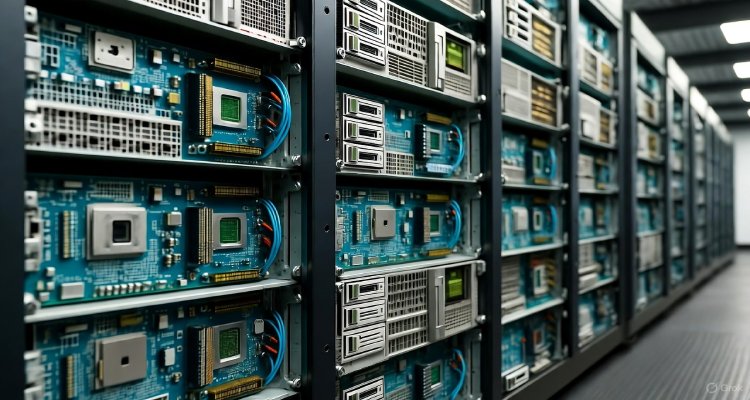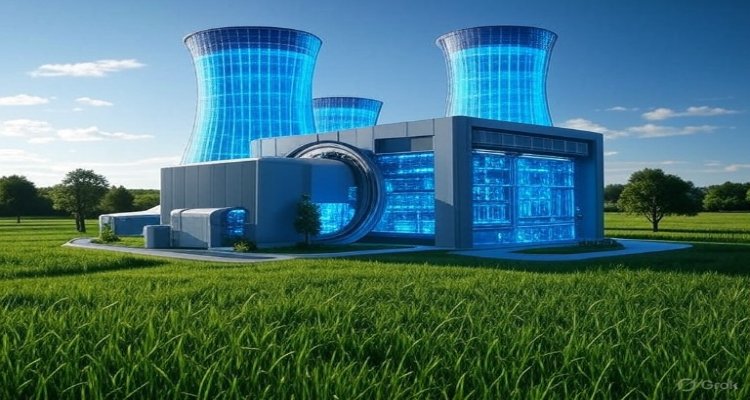The Next Nuclear: Small Reactors and Big Promises
Small modular reactors (SMRs) promise cleaner, safer, and more flexible nuclear power. Could they be the future of global energy?
Introduction: A New Face of Nuclear Power
In the fight against climate change, nations are searching for reliable energy sources that cut carbon emissions without compromising growth. While wind and solar dominate headlines, a quieter revolution is underway in the nuclear industry. Small modular reactors (SMRs)—compact, factory-built power plants—are being hailed as the next big step in nuclear technology. Supporters call them safer, cheaper, and more adaptable than traditional nuclear plants. But can they truly deliver on their big promises?
Context & Background: From Giants to Minis
For decades, nuclear energy has been defined by massive reactors that required years of construction, billions of dollars in investment, and constant public scrutiny over safety risks.
The rise of SMRs challenges that image. Typically producing 50–300 megawatts of electricity (compared to traditional reactors generating over 1,000 MW), SMRs are designed to be modular, meaning they can be built in factories, shipped to sites, and scaled up as needed.
Governments and private companies alike see them as a way to:
- Reduce upfront costs by standardizing designs.
- Enhance safety through passive cooling systems and smaller fuel loads.
- Expand access to clean energy in remote regions, military bases, or industrial hubs.
Main Developments: Momentum Around the Globe
The SMR movement is no longer theoretical—it’s gaining traction worldwide.
- United States: Companies like NuScale Power are leading the charge, with plans for SMR projects in Idaho and beyond. The U.S. Nuclear Regulatory Commission (NRC) approved NuScale’s design in 2023, a milestone for the industry.
- Europe: The U.K. has invested heavily in Rolls-Royce SMRs, aiming to deploy the first units by the early 2030s.
- Asia: China and Russia are already testing SMRs, with floating nuclear plants and prototypes in operation.
The International Atomic Energy Agency (IAEA) estimates that more than 80 SMR designs are in development across 19 countries.
Expert Insight: Promise Meets Skepticism
Supporters argue SMRs could be a game-changer in the transition to clean energy.
“Nuclear is one of the only carbon-free baseload power sources we have,” notes Dr. Allison Macfarlane, former chair of the U.S. Nuclear Regulatory Commission. “SMRs offer flexibility and a smaller environmental footprint compared to older reactors.”
Yet, critics caution against excessive optimism. The technology is still in its infancy, and no commercial SMR has been proven at scale. Opponents raise concerns about:
- High costs: Despite modular design, development expenses remain steep.
- Nuclear waste: Even small reactors generate radioactive waste requiring long-term storage.
- Proliferation risks: The spread of nuclear technology could raise security challenges.
Impact & Implications: The Road Ahead
If SMRs live up to their potential, they could reshape global energy landscapes.
- Climate Strategy: They could complement renewables, ensuring round-the-clock clean power.
- Economic Growth: Factory-built reactors could create new supply chains and jobs.
- Geopolitics: Nations investing early in SMR technology may gain influence over the future of nuclear standards and exports.
But the stakes are high. A single failed project could sour public trust and stall the industry’s progress—echoing the troubled history of large-scale nuclear projects plagued by delays and cost overruns.
Conclusion: Big Promises, Small Reactors
Small modular reactors embody both the hope and uncertainty of the nuclear renaissance. They offer a vision of a flexible, low-carbon future where nuclear energy plays a pivotal role in combating climate change. Yet, the industry still faces daunting technical, financial, and political hurdles.
The coming decade will reveal whether SMRs become the next nuclear breakthrough or just another ambitious experiment. For now, the world is watching as small reactors carry big promises.
Disclaimer :This article is for informational purposes only and does not constitute investment, engineering, or policy advice.











